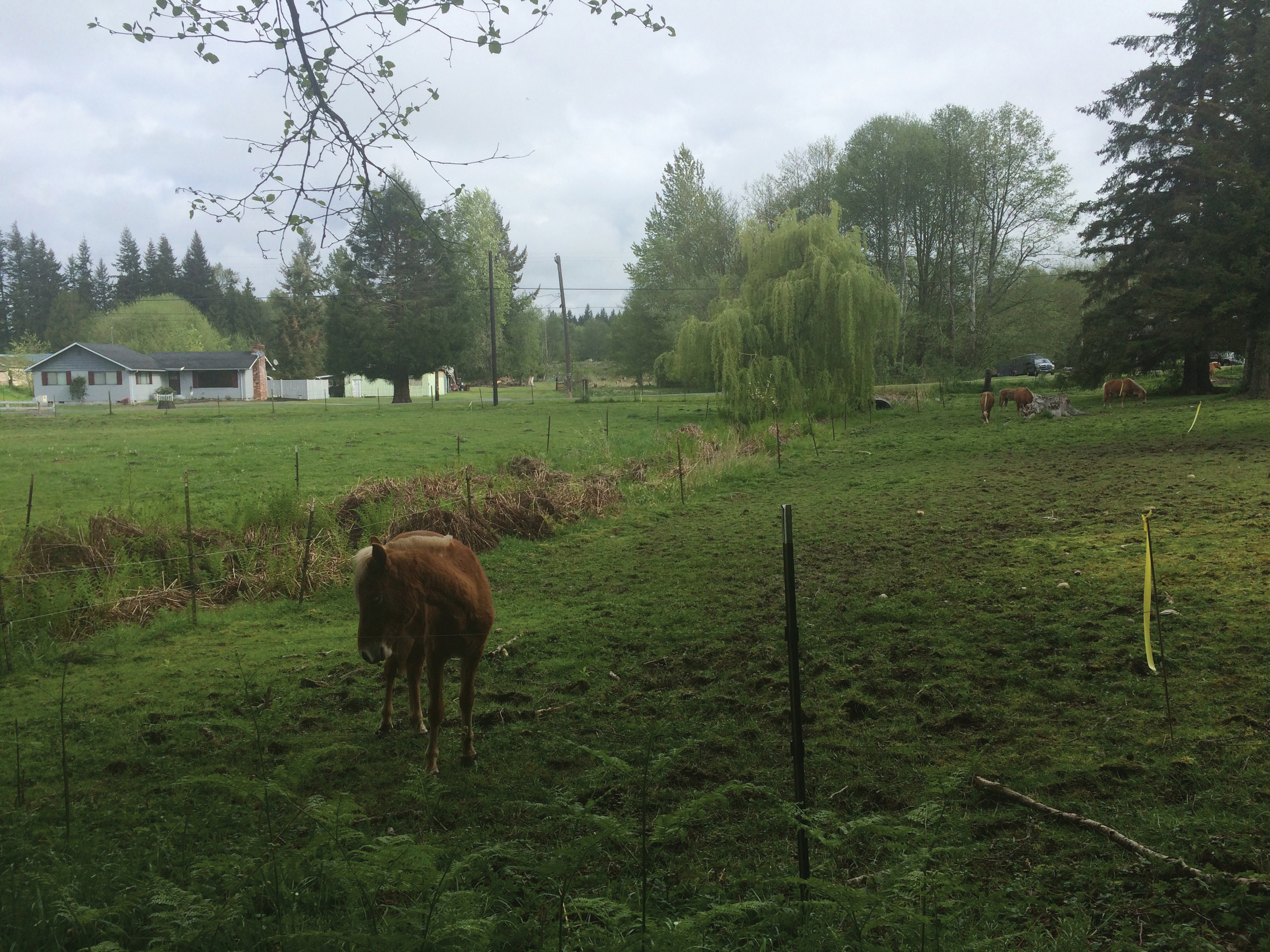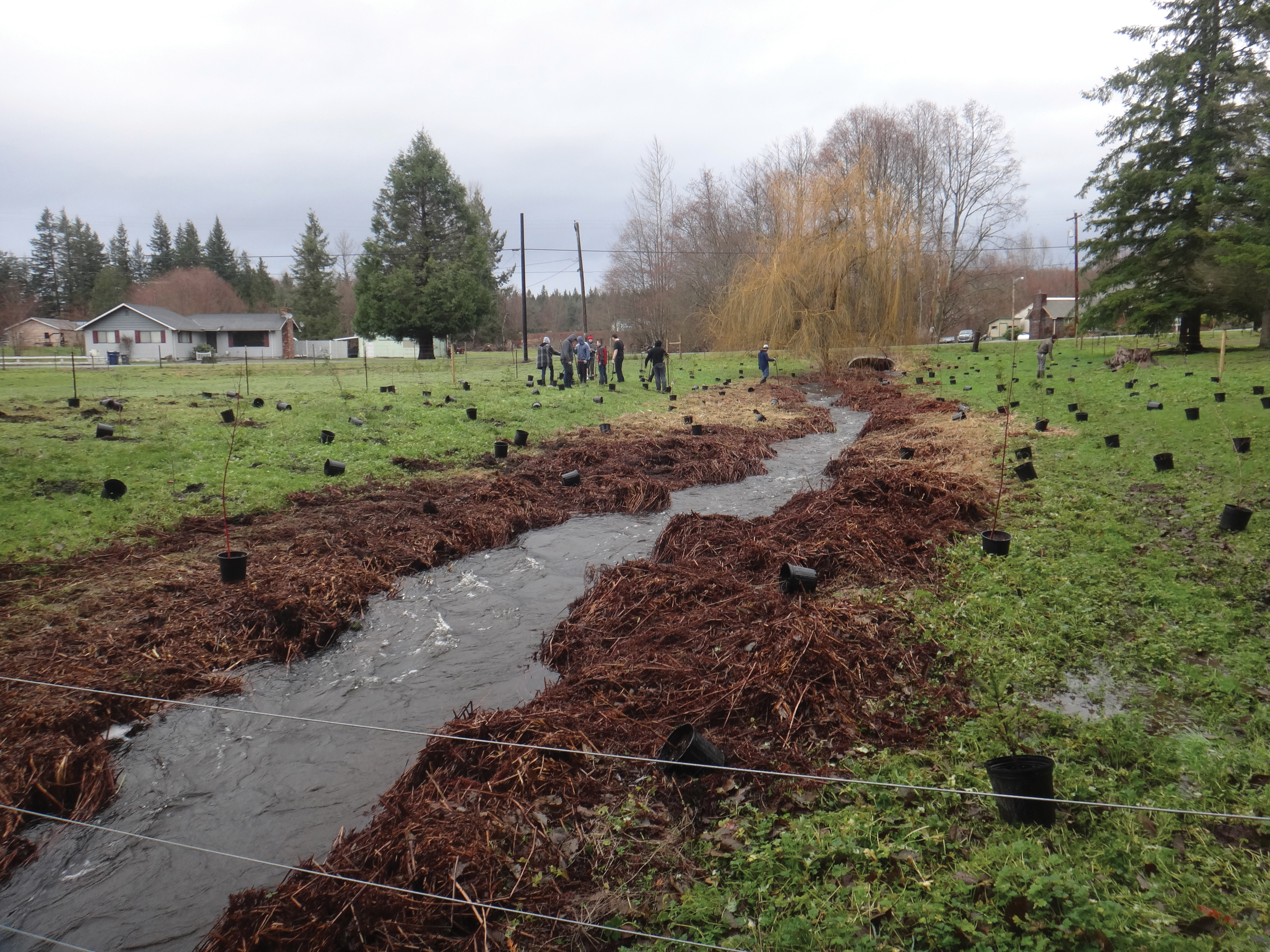Making Progress on Church Creek
/Improving watershed health takes everyone. It takes landowners of all types – urban, rural, farmers – coming together and figuring out how they can do their part to keep the watershed healthy for the near- and long-term. Since 2013, the Snohomish Conservation District has been working to accomplish exactly that in the Church Creek sub-basin, thanks to a grant.
We have been working cooperatively with landowners to re-forest streams to provide shade and fish habitat, and to implement farm Best Management Practices to reduce nutrient and bacterial pollution and improve chore efficiency. We have been working with urban landowners and businesses to assess how to best approach their stormwater issues.
Why Church Creek?
Church Creek is a tributary to the Old Stillaguamish Channel. It’s home to several species of salmon, provides recreational opportunities and contributes water to Port Susan, a shellfish harvest area. Loss of forest cover in the Church Creek Watershed has resulted in a variety of water quality problems and has limited salmon recovery in the Stillaguamish Basin. Church Creek is currently on the Department of Ecology’s 303(d) list of impaired waters for dissolved oxygen and fecal coliform bacteria contamination. Low levels of dissolved oxygen is caused by a lack of streamside forest and is harmful to fish and aquatic creatures. Fecal coliform bacteria contamination is caused by human, pet, and animal waste, and can make water unsafe for swimming, recreation, and shellfish harvest.
Bill Cayford
Bill Cayford loves to tell visitors to his property about the salmon he has seen spawning in the stream during the forty years he’s lived there. The beautiful cobbles and gravel that make up the stream bed are ideal for salmon spawning. Bill leases his pastures along Church Creek to neighboring horse owners, and although he’s always made a point to fence the horses out of the creek, in some spots the pasture extended nearly to the top of the bank.
Upon learning about the programs and resources that the Snohomish Conservation District offers, Bill was eager to get involved and do what he could to improve the health of Church Creek. With the assistance of District staff and grant funding from the Department of Ecology and Snohomish County, Bill was able to install a new fence to keep the horses further from the stream and plant over 400 native trees and shrubs along the stream, at no cost to himself!
Robbin Ballard
The seasonal stream that runs through Robbin Ballard’s property may not provide habitat for spawning salmon, but nonetheless plays a critical role in keeping Church Creek clean. These small streams, which often dry up completely in the summer months, still carry significant surface water flows, and potential pollutants, during the winter months.
Since Robbin moved to her property in 2004, she’s seen mud and runoff become bigger issues in the winter and blackberries choking out native plants along the stream. Robbin has been able to take advantage of these grant programs to protect natural resources and improve her horse property.
To date, Robbin has worked with the District to install a streamside plant buffer, a new fence to keep horses out of the stream and a heavy use area and gutters for her barn. These will help keep mud and manure runoff out of the stream system. She is also planning on installing a new compost bin setup this spring. Soon, Robbin will be eligible to become a Sound Horsekeeper.




Help is Available
Snohomish Conservation District still has grant funds available to help complete projects like these, but it won’t last forever. With this funding, we are able to fully fund planting projects on Church Creek and its tributaries.
Our Washington Conservation Crew will:
- remove noxious weeds from your property
- re-plant with native trees and shrubs
- maintain the planting area for three to five years
- Cost-share funding is also available to help landowners implement Best Management Practices, such as compost bins and heavy use areas.
The District also offers
- free soil testing
- free site visits
- project planning services
To learn more, contact Alex Pittman at 425-377-7013 or email habitat@snohomishcd.org.

